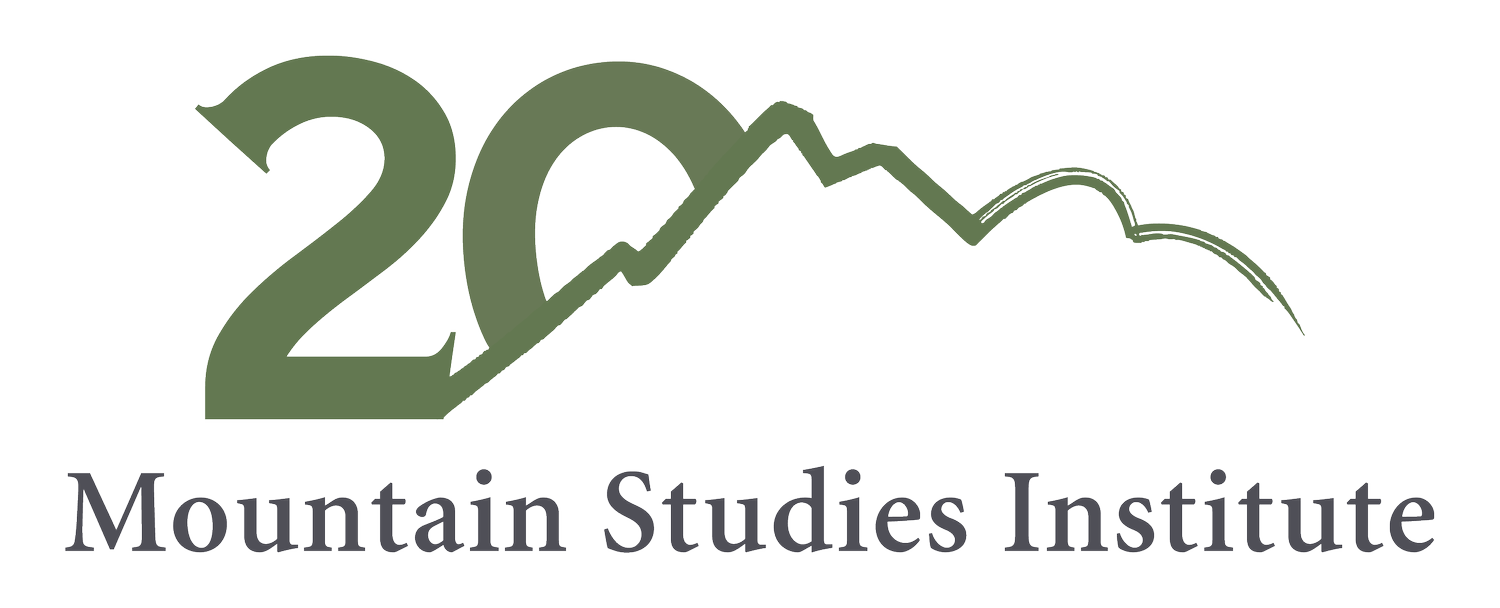Alpine Lakes are Sensitive to Change
In 2010, MSI began a five year contract with the USGS to take water samples from six alpine lakes in the Weminuche Wilderness. These lakes are part of a twenty-five year study which has analyzed water chemistry in Rocky Mountain lakes to determine changes in the atmospheric deposition of mercury, sulfates and other common pollutants. MSI is in the second year of this five year project with the results from 2010 contributing to the understanding of alpine lake/atmospheric interactions.
The results of this monitoring project will enable long-term trend analyses of water quality. In Mast et al summarizing the first 25 years of monitoring, trends in precipitation chemistry and hydrologic and climatic data were examined as drivers of long-term changes in the chemical composition of high-elevation lakes in three wilderness areas in Colorado during 1985–2008. Sulfate concentrations in precipitation decreased at a rate of -0.15 to -0.55 leq/l/year at 10 high-elevation National Atmospheric Deposition Program stations in the state during 1987–2008 reflecting regional reductions in SO2 emissions. In lakes where sulfate is primarily derived from atmospheric inputs, sulfate concentrations also decreased although the rates generally were less, ranging from -0.12 to -0.27 leq/l/year. The similarity in timing and sulfur isotopic data support the hypothesis that decreases in atmospheric deposition are driving the response of high-elevation lakes in some areas of the state. By contrast, in lakes where sulfate is derived primarily from watershed weathering sources, sulfate concentrations showed sharp increases during 1985–2008. Analysis of long-term climate records indicates that annual air temperatures have increased between 0.45 and 0.93°C per decade throughout most mountainous areas of Colorado, suggesting climate as a factor. Isotopic data reveal that sulfate in these lakes is largely derived from pyrite, which may indicate climate warming is preferentially affecting the rate of pyrite weathering.
In Mast and Ingersol (2011), many significant trends were evident in lake-water concentrations in the study lakes. About 70 percent of lakes had significant trends in specific conductance, pH, calcium, and sulfate concentrations, whereas less than 20 percent had trends in chloride and nitrate concentrations. Despite widespread declines in sulfate deposition, decreases in lake-water sulfate concentrations were mostly limited to lakes in the Zirkel/Flat Tops Mountains. Because sulfate in these lakes is derived primarily from atmospheric sources, lake chemistry in these two areas appears to be responding to regional and local declines in sulfur dioxide emissions. Many lakes showed upward trends in sulfate concentrations as well as acid neutralizing capacity and calcium concentrations. Upward trends in dissolved constituents appeared to be partly explained by a decline in precipitation between 1995 and 2002, which may have increased base-flow contributions to some lakes. Air temperatures, which increased throughout the region, also may have been a factor in lake-water chemical trends. Warming in alpine areas might increase rates of mineral weathering or cause enhanced melting of ice features such as permafrost, rock glaciers, and glaciers. The effect of melting ice on the chemistry of the study lakes is difficult to assess due to the unknown extent of permafrost as well as a lack of detailed hydrologic data. The notable increases in sulfate concentrations may indicate that warming is enhancing the rate of pyrite weathering, perhaps related to availability of oxygen. Another potential effect of warming might be to increase the frequency of freeze-thaw cycles in alpine areas. This mechanism might provide a possible explanation for the increases in acid neutralizing capacity in addition to sulfate that was observed at many of the lakes.
For some great background information:
Response of lake chemistry to changes in atmospheric deposition and climate in three high-elevation wilderness areas of Colorado written by M. Alisa Mast, et al in Biogeochemistry.
Trends in Lake Chemistry in Response to Atmospheric Deposition and Climate in Selected Class I Wilderness Areas in Colorado, Idaho, Utah, and Wyoming, 1993–2009 by the U.S. Geologic Society and Prepared in cooperation with the U.S. Department of Agriculture Forest Service, Air Resource Management. Written by M. Alisa Mast and George P. Ingersoll.






